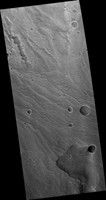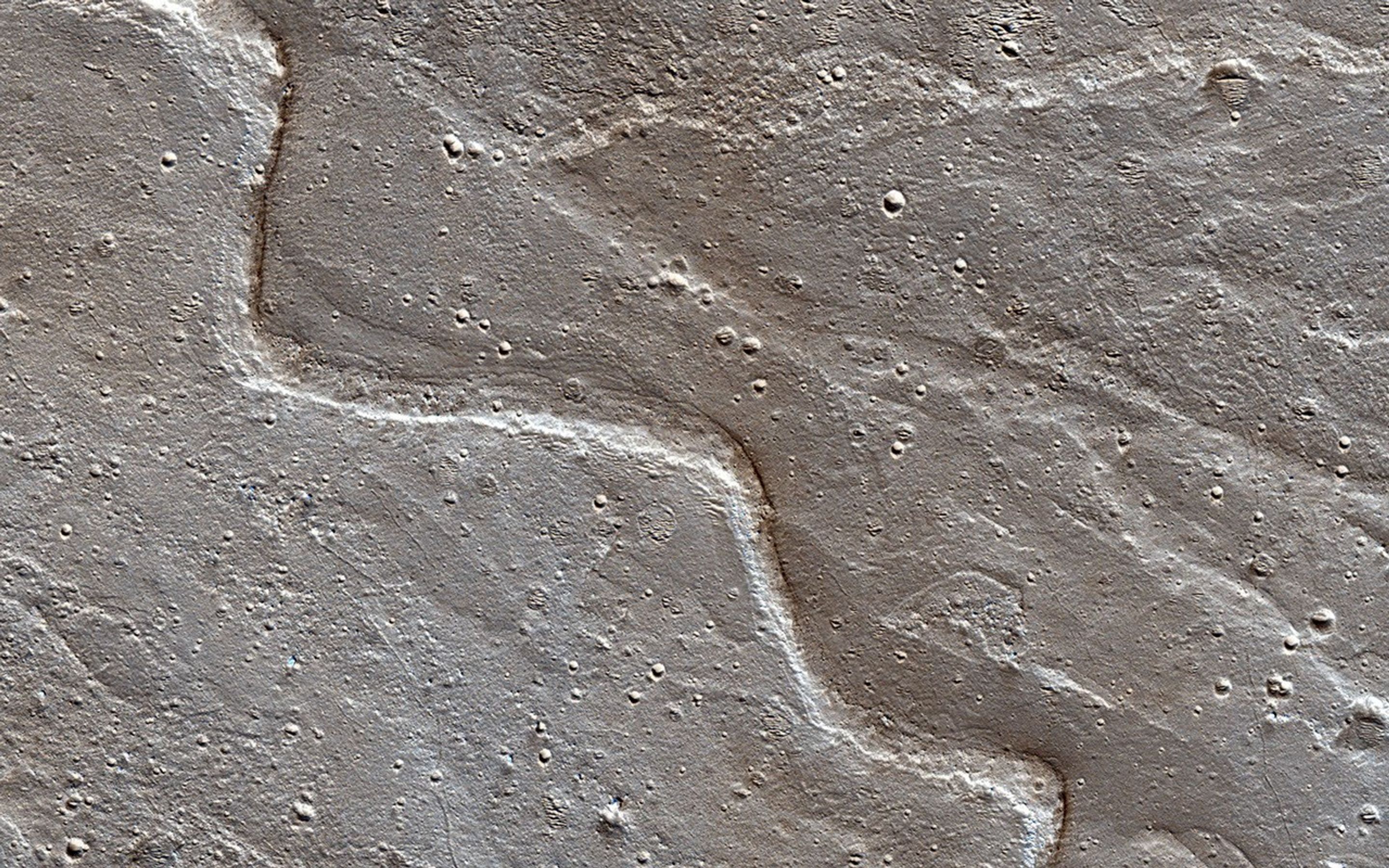Description

Map Projected Browse Image
Click on the image for larger version
Alluvial fans are piles of debris dumped by rivers when they emerge from the mountains and enter a mostly dry valley. A bajada (such as this example named after the famous American filmmaker) consists of a series of coalescing alluvial fans along a mountain front.
On the surface of this bajada, one can see many sinuous ridges. These ridges mark the path that streams of water took as they flowed into this crater. The sinuosity of the ridges tells us something about the speed of the water flow. Fast moving flows tend to be straighter than slow-moving.
Observations like this help us build a picture of how rivers behaved on ancient Mars.
The University of Arizona, Tucson, operates HiRISE, which was built by Ball Aerospace & Technologies Corp., Boulder, Colorado. NASA's Jet Propulsion Laboratory, a division of the California Institute of Technology in Pasadena, manages the Mars Reconnaissance Orbiter Project and Mars Science Laboratory Project for NASA's Science Mission Directorate, Washington.
































